Power Distribution Control Framework for Renewable Energy Architecture with Battery-Supercapacitor Based Hybrid Energy Storage Systems
Abstract
:1. Introduction
2. Asymmetrical Cascaded H-Bridge under Level-Shift PWM
- Dead-band intervals of switches are ignored.
- The output current is an ideal sinusoidal wave, which can be expressed as , where is the phase angle of output current.
- The conduction voltage drop and equivalent resistance of switches are ignored.
- The voltage increment of super capacitor and battery within a fundamental cycle is negligible.
3. Modulation Method for Power Flow Control
4. SSA-LSTM-Model-Based Power Flow Control Algorithm
4.1. Long Short-Term Memory (LSTM) Architecture
4.2. Application of Sparrow Search Algorithm for LSTM Optimization
- Initialize the parameters of the SSA including sparrow population, position, composition and the maximum number of iteration. Initialize the structure of LSTM and the weights and bias of LSTM model are taken as optimization targets.
- The objective function of SSA is the mean absolute error (MAE) of predicted value of untrained LSTM model compared with raw data.
- Update the positions of the sparrows based on the results of the objective functions to achieve the optimal initial value of LSTM when reach the maximum iteration number.
- The particle values of SSA is used as the LSTM model’s weights and bias. Then the training dataset is input into optimized LSTM model to get the final forecasting model.
5. Power Distribution Framework
6. Experiment and Analysis
6.1. Data Description
6.2. Experiment Results and Analysis
- The proposed SSA − LSTM model have lower forecasting error, indicating an improved accuracy of the power load prediciton.
- Compared with the conventional LSTM model, the SSA − LSTM model reduces the prediction error by about , suggesting its potential for practical application.
- the SSA + LSTM prediction method proposed in this paper follows the curve of real values closely, which shows outstanding performance of out of sample.
- In the short term simulation, the proposed modulation strategy can allocate the power flexibily without giving birth to low frequency harmonic content as is shown in Figure 12. The harmonic content is located around the switching frequency.
7. Conclusions
Author Contributions
Funding
Conflicts of Interest
References
- Guerrero, J.M.; Blaabjerg, F.; Zhelev, T.; Hemmes, K.; Monmasson, E.; Jemei, S.; Comech, M.P.; Granadino, R.; Frau, J.I. Distributed Generation: Toward a New Energy Paradigm. IEEE Ind. Electron. Mag. 2010, 4, 52–64. [Google Scholar] [CrossRef]
- Abu-Elzait, S.; Parkin, R. Economic and Environmental Advantages of Renewable-based Microgrids over Conventional Microgrids. In Proceedings of the 2019 IEEE Green Technologies Conference (GreenTech), Lafayette, LA, USA, 3–6 April 2019; pp. 1–4. [Google Scholar]
- Sangwongwanch, A.; Yang, Y.; Blaabjerg, F. High-Performance Constant Power Generation in Grid-Connected PV Systems. IEEE Trans. Power Electron. 2016, 31, 1822–1825. [Google Scholar] [CrossRef] [Green Version]
- Yang, B.; Makarov, Y.; Desteese, J.; Viswanathan, V.; Nyeng, P.; McManus, B.; Pease, J. On the use of energy storage technologies for regulation services in electric power systems with significant penetration of wind energy. In Proceedings of the 2008 5th International Conference on the European Electricity Market, Lisboa, Portugal, 28–30 May 2008; pp. 1–6. [Google Scholar] [CrossRef]
- Vazquez, S.; Lukic, S.; Galvan, E.; Franquelo, L.G.; Carrasco, J.M.; Leon, J.I. Recent advances on Energy Storage Systems. In Proceedings of the IECON 2011—37th Annual Conference of the IEEE Industrial Electronics Society, Melbourne, VIC, Australia, 7–10 November 2011; pp. 4636–4640. [Google Scholar] [CrossRef]
- Wei, Z.; Quan, Z.; Wu, J.; Li, Y.; Pou, J.; Zhong, H. Deep Deterministic Policy Gradient-DRL Enabled Multiphysics-Constrained Fast Charging of Lithium-Ion Battery. IEEE Trans. Ind. Electron. 2021, 1. [Google Scholar] [CrossRef]
- Wu, J.; Wei, Z.; Liu, K.; Quan, Z.; Li, Y. Battery-Involved Energy Management for Hybrid Electric Bus Based on Expert-Assistance Deep Deterministic Policy Gradient Algorithm. IEEE Trans. Veh. Technol. 2020, 69, 12786–12796. [Google Scholar] [CrossRef]
- Dorn-Gomba, L.; Magne, P.; Danen, B.; Emadi, A. On the Concept of the Multi-Source Inverter for Hybrid Electric Vehicle Powertrains. IEEE Trans. Power Electron. 2018, 33, 7376–7386. [Google Scholar] [CrossRef]
- Wu, J.; Wei, Z.; Li, W.; Wang, Y.; Li, Y.; Sauer, D.U. Battery Thermal- and Health-Constrained Energy Management for Hybrid Electric Bus Based on Soft Actor-Critic DRL Algorithm. IEEE Trans. Ind. Inform. 2021, 17, 3751–3761. [Google Scholar] [CrossRef]
- Luo, X.; Wang, J.; Dooner, M.; Clarke, J. Overview of current development in electrical energy storage technologies and the application potential in power system operation. Appl. Energy 2015, 137, 511–536. [Google Scholar] [CrossRef] [Green Version]
- Zhang, Y.; Jiang, Z.; Yu, X. Control Strategies for Battery/Supercapacitor Hybrid Energy Storage Systems. In Proceedings of the 2008 IEEE Energy 2030 Conference, Atlanta, GA, USA, 17–18 November 2008; pp. 1–6. [Google Scholar] [CrossRef]
- Jung, H.; Conficoni, C.; Tilli, A.; Hu, T. Modeling and control design for power systems driven by battery/supercapacitor hybrid energy storage devices. In Proceedings of the 2013 American Control Conference, Washington, DC, USA, 17–19 June 2013; pp. 4283–4288. [Google Scholar] [CrossRef]
- Sun, L.; Feng, K.; Chapman, C.; Zhang, N. An Adaptive Power-Split Strategy for Battery-Supercapacitor Powertrain—Design, Simulation, and Experiment. IEEE Trans. Power Electron. 2017, 32, 9364–9375. [Google Scholar] [CrossRef]
- Zhou, Y.; Huang, Z.; Liao, H.; Li, H.; Jiao, Y.; Peng, J. A Predictive Set-Point Modulation Energy Management Strategy for Hybrid Energy Storage Systems. IEEE Trans. Ind. Appl. 2019, 55, 6266–6277. [Google Scholar] [CrossRef]
- Rahimi, T.; Ding, L.; Kheshti, M.; Faraji, R.; Guerrero, J.M.; Tinajero, G.D.A. Inertia Response Coordination Strategy of Wind Generators and Hybrid Energy Storage and Operation Cost-Based Multi-Objective Optimizing of Frequency Control Parameters. IEEE Access 2021, 9, 74684–74702. [Google Scholar] [CrossRef]
- Wu, H.; Liu, T.; Yang, T.; Wang, J.; Ding, S.; Xing, Y. A modified SVPWM strategy applied to a three-phase three-port bidirectional AC-DC rectifier for efficiency enhancement. In Proceedings of the 2017 IEEE Energy Conversion Congress and Exposition (ECCE), Cincinnati, OH, USA, 1–5 October 2017. [Google Scholar]
- Bhattacharjee, A.K.; Kutkut, N.; Batarseh, I. Review of Multiport Converters for Solar and Energy Storage Integration. IEEE Trans. Power Electron. 2019, 34, 1431–1445. [Google Scholar] [CrossRef]
- Wang, J.; Sun, K.; Xue, C.; Liu, T.; Li, Y. Multi-Port DC-AC Converter with Differential Power Processing DC-DC Converter and Flexible Power Control for Battery ESS Integrated PV Systems. IEEE Trans. Ind. Electron. 2021, 1. [Google Scholar] [CrossRef]
- Mei, Q.; Xu, Z.; Wu, W. A novel multi-port DC-DC converter for hybrid renewable energy distributed generation systems connected to power grid. In Proceedings of the 2008 IEEE International Conference on Industrial Technology, Chengdu, China, 21–24 April 2008; pp. 1–5. [Google Scholar] [CrossRef]
- Liu, C.; Ruan, J.; Li, G.; Deng, Y.; He, X. A Space Vector Modulation Strategy for Maximum Port Power Distribution Range in a Three-Port Three-Phase Converter. In Proceedings of the 2020 IEEE 9th International Power Electronics and Motion Control Conference (IPEMC2020-ECCE Asia), Nanjing, China, 29 November–2 December 2020; pp. 2380–2384. [Google Scholar]
- Liu, L.; Li, H.; Wu, Z.; Zhou, Y. A Cascaded Photovoltaic System Integrating Segmented Energy Storages With Self-Regulating Power Allocation Control and Wide Range Reactive Power Compensation. IEEE Trans. Power Electron. 2011, 26, 3545–3559. [Google Scholar] [CrossRef]
- Xiaoliang, H.; Hiramatsu, T.; Yoichi, H. Energy Management Strategy based on frequency-varying filter for the battery supercapacitor hybrid system of Electric Vehicles. In Proceedings of the 2013 World Electric Vehicle Symposium and Exhibition (EVS27), Barcelona, Spain, 17–20 November 2013; pp. 1–6. [Google Scholar] [CrossRef] [Green Version]
- Schwendemann, R.; Sommer, F.; Hiller, M. A resonant supplied cascaded H-Bridge Cell for a Series Hybrid Cascaded H-Bridge Converter used as a Power Hardware in the Loop Emulator. In Proceedings of the 2020 IEEE 21st Workshop on Control and Modeling for Power Electronics (COMPEL), Aalborg, Denmark, 9–12 November 2020; pp. 1–8. [Google Scholar] [CrossRef]
- Yu, H.; Liu, J.; Yao, W.; Lu, Z.; Ji, Y. An improved drive signal exchange strategy for cascaded H-bridge topology. In Proceedings of the 2018 IEEE Applied Power Electronics Conference and Exposition (APEC), San Antonio, TX, USA, 4–8 March 2018; pp. 2476–2481. [Google Scholar] [CrossRef]
- Hochreiter, S.; Schmidhuber, J. Long Short-Term Memory. Neural Comput. 1997, 9, 1735–1780. [Google Scholar] [CrossRef] [PubMed]
- Greff, K.; Srivastava, R.K.; Koutník, J.; Steunebrink, B.R.; Schmidhuber, J. LSTM: A Search Space Odyssey. IEEE Trans. Neural Netw. Learn. Syst. 2017, 28, 2222–2232. [Google Scholar] [CrossRef] [PubMed] [Green Version]
- Xue, J.; Shen, B. A novel swarm intelligence optimization approach: Sparrow search algorithm. Syst. Sci. Control. Eng. 2020, 8, 22–34. [Google Scholar] [CrossRef]
- Song, W.; Liu, S.; Wang, X.; Wu, W. An Improved Sparrow Search Algorithm. In Proceedings of the 2020 IEEE Intl. Conf. on Parallel Distributed Processing with Applications, Big Data Cloud Computing, Sustainable Computing Communications, Social Computing Networking (ISPA/BDCloud/SocialCom/SustainCom), Exeter, UK, 17–19 December 2020; pp. 537–543. [Google Scholar] [CrossRef]

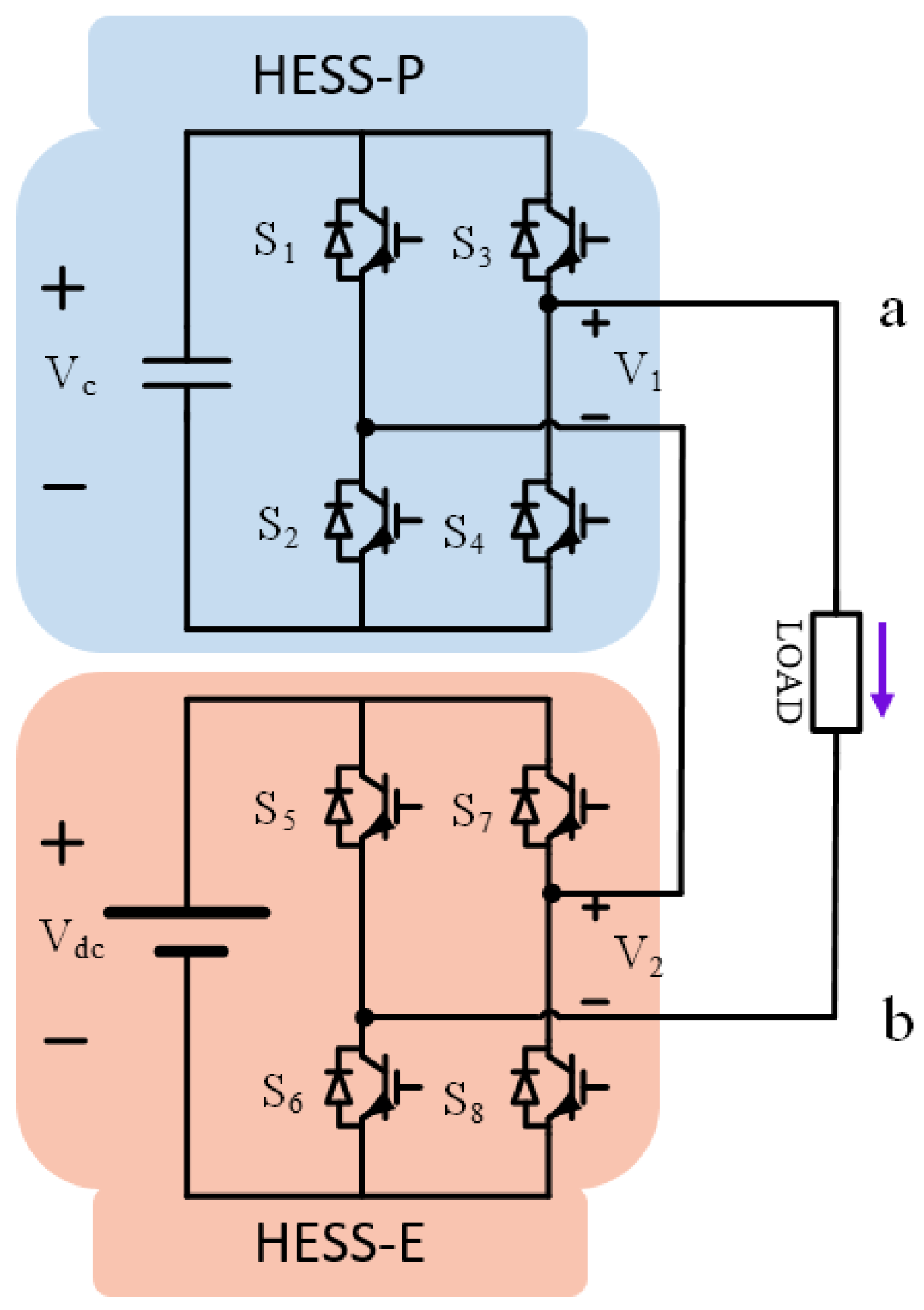
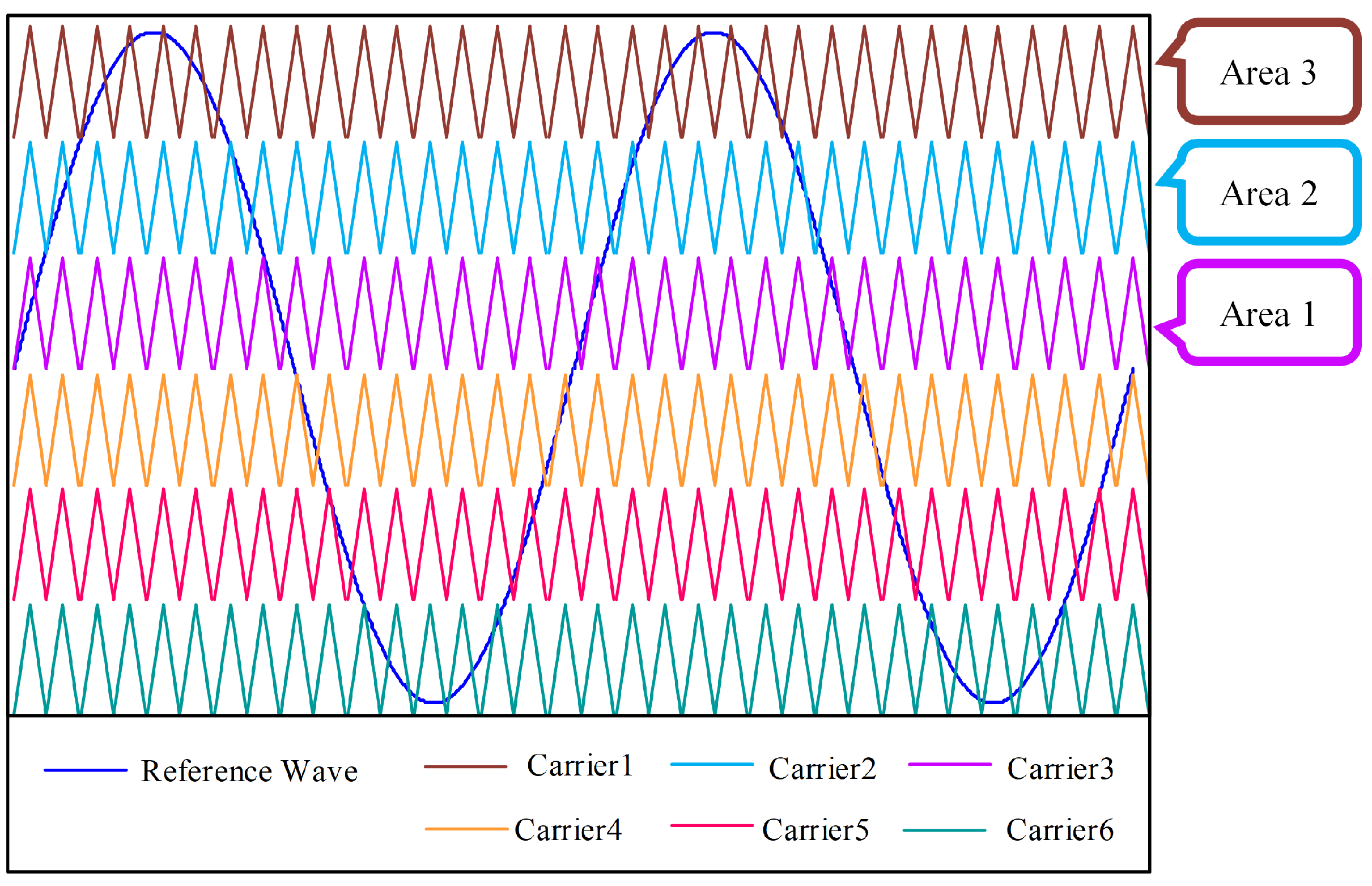

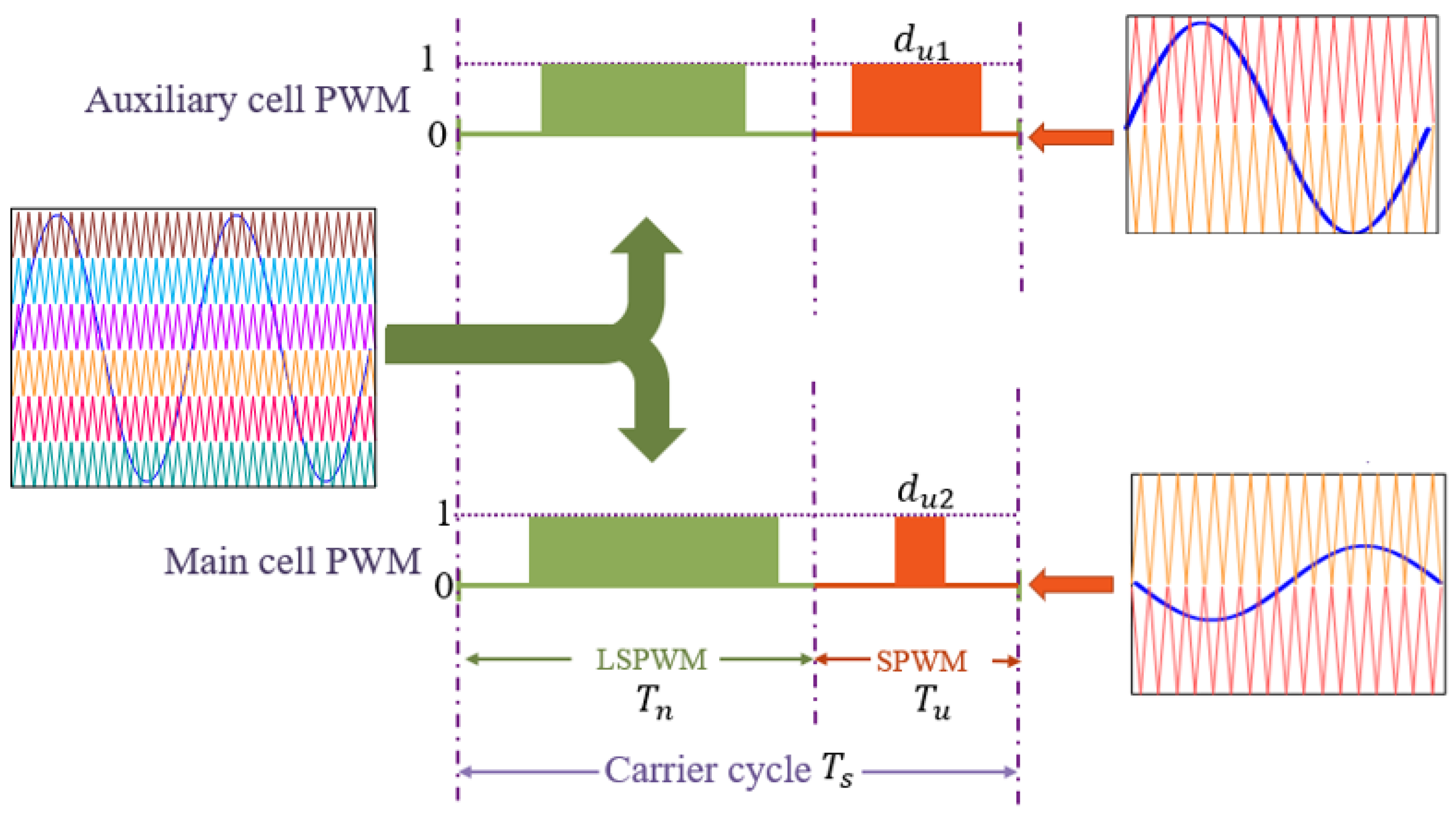
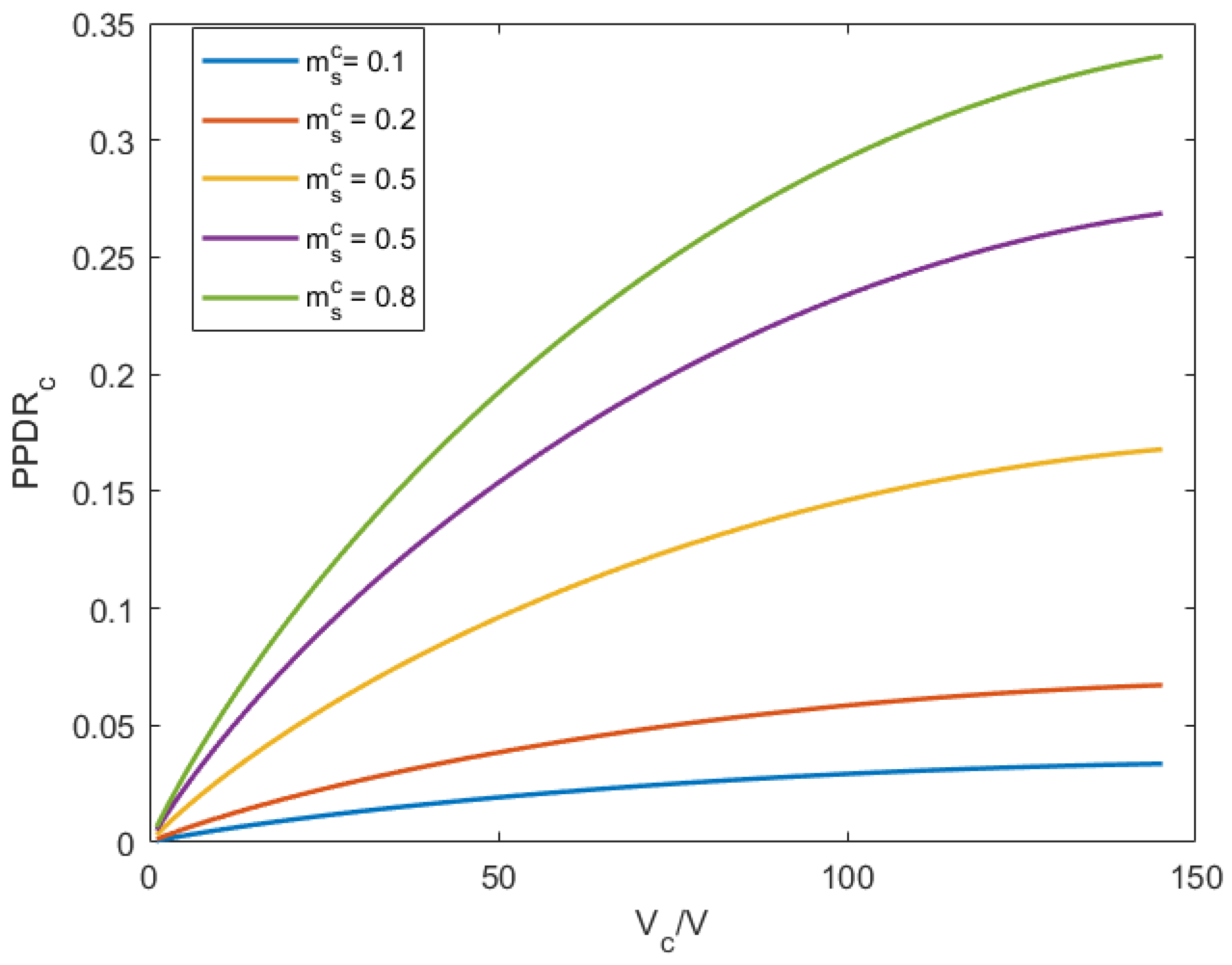
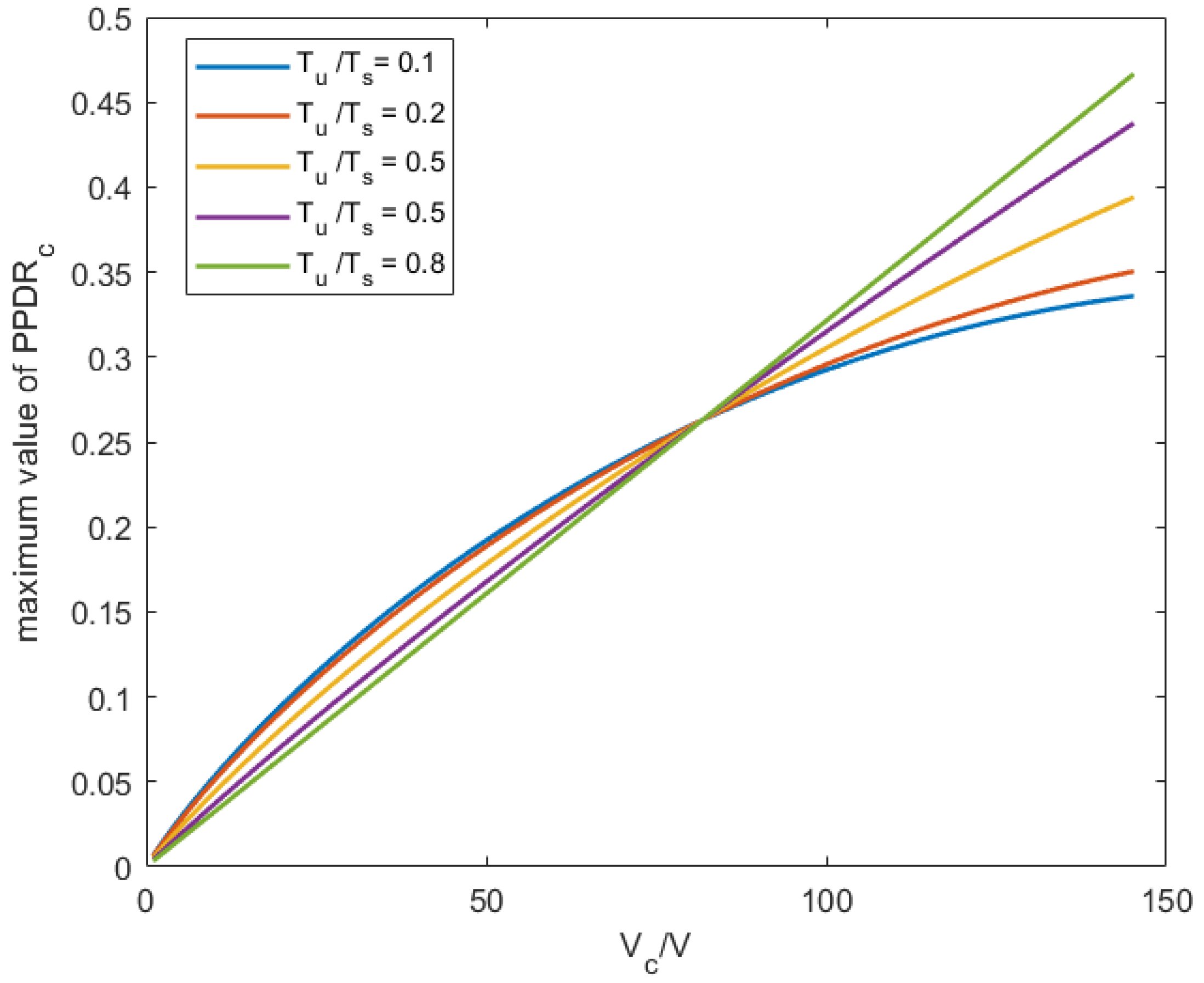
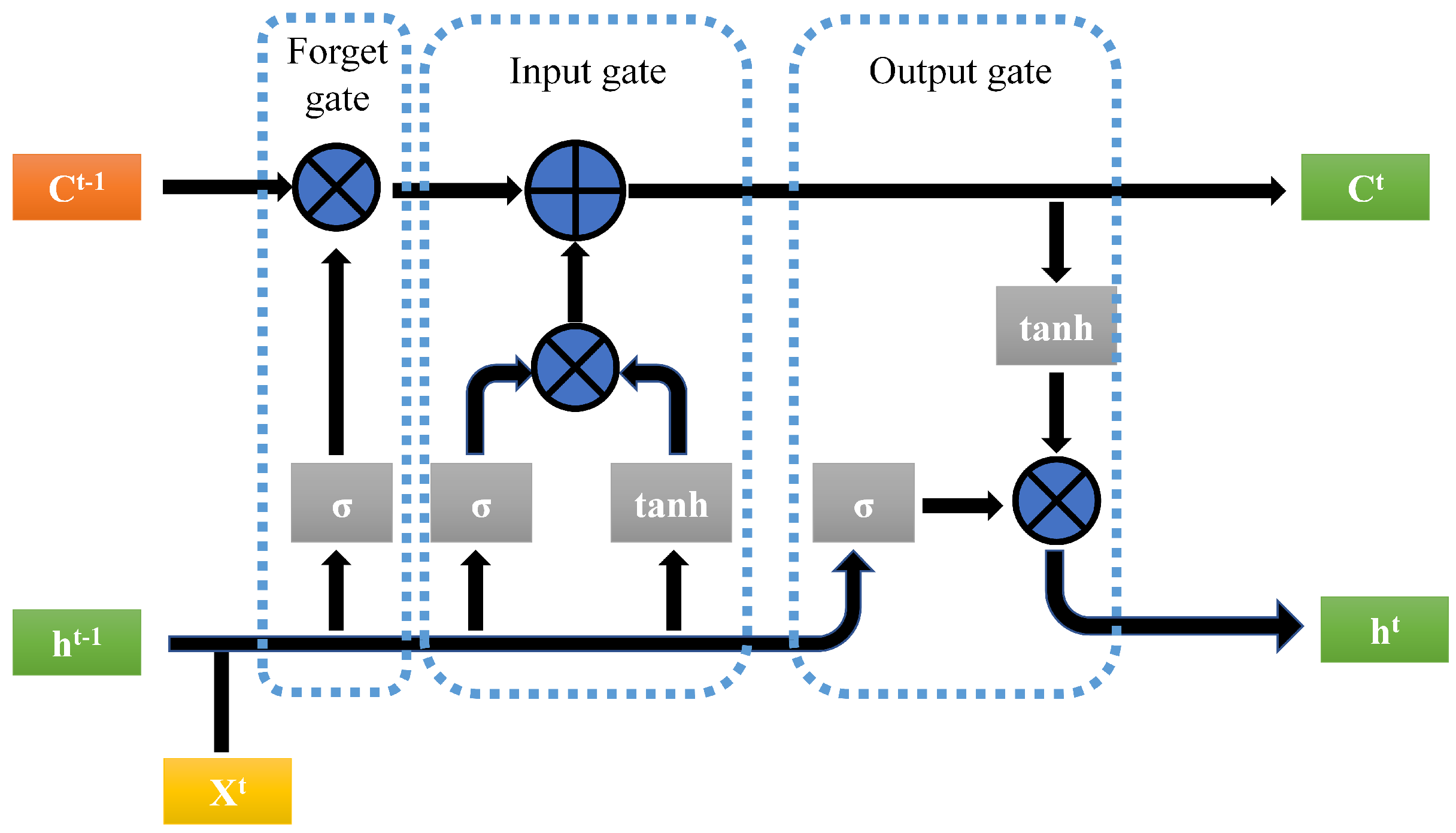
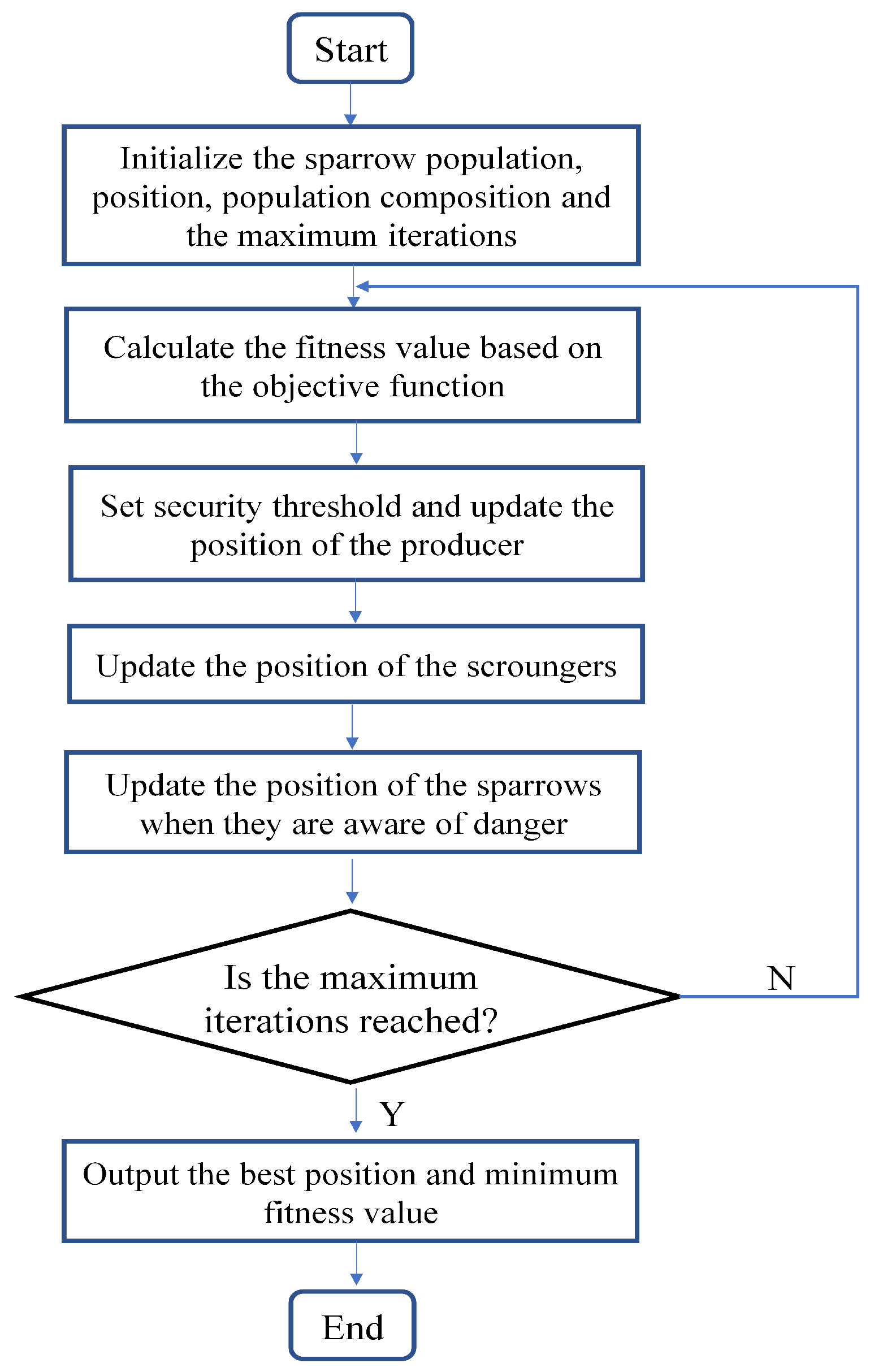
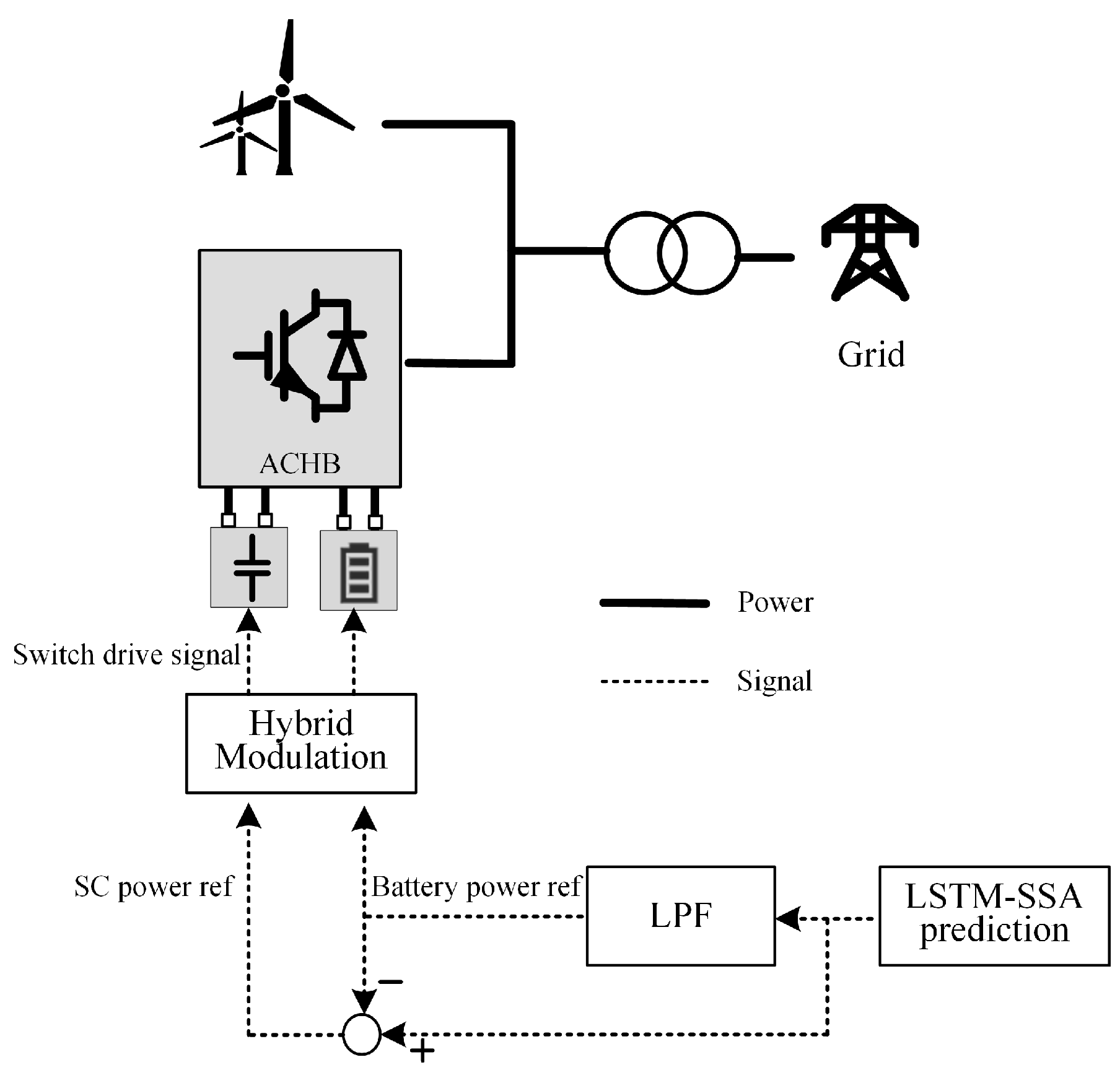

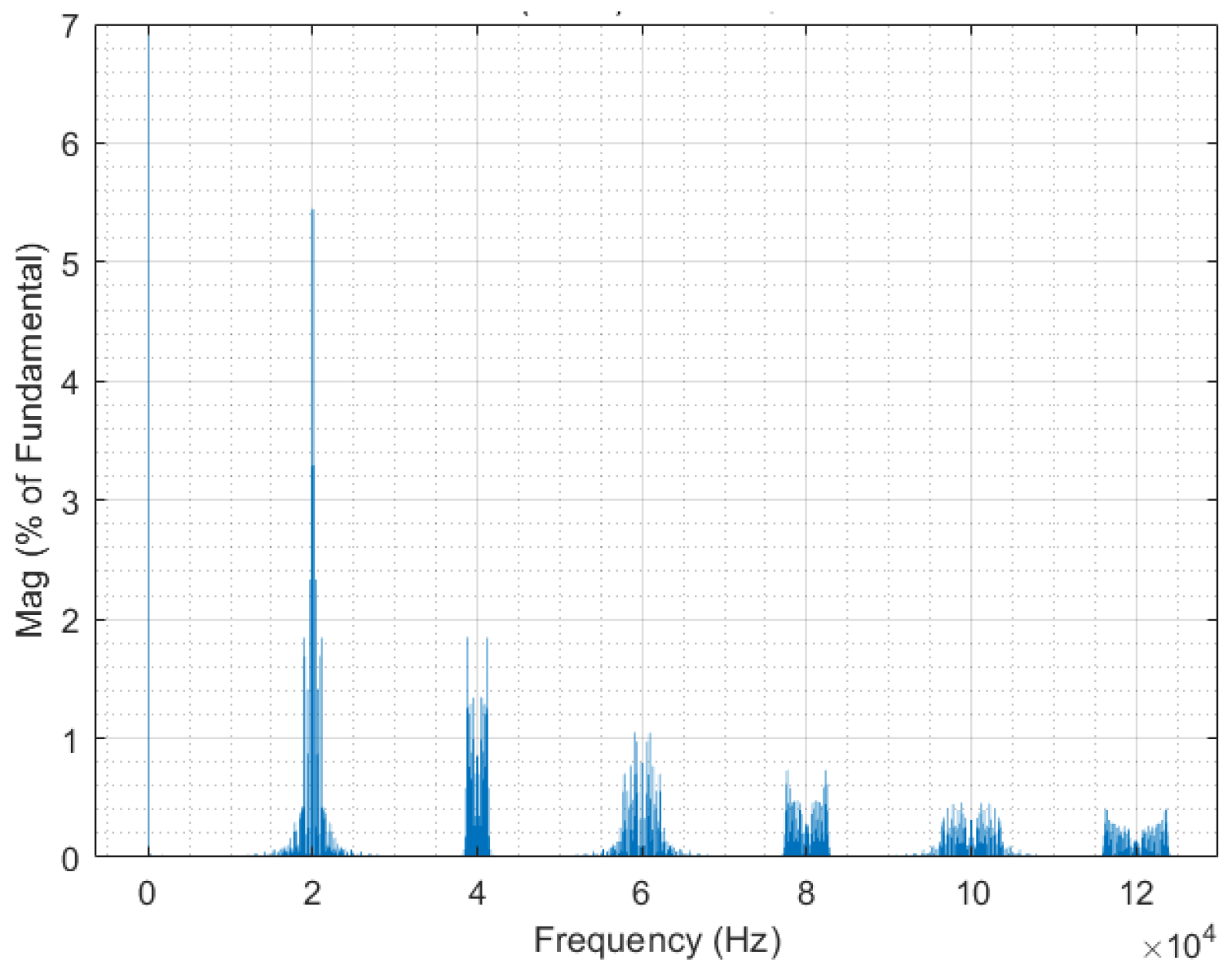
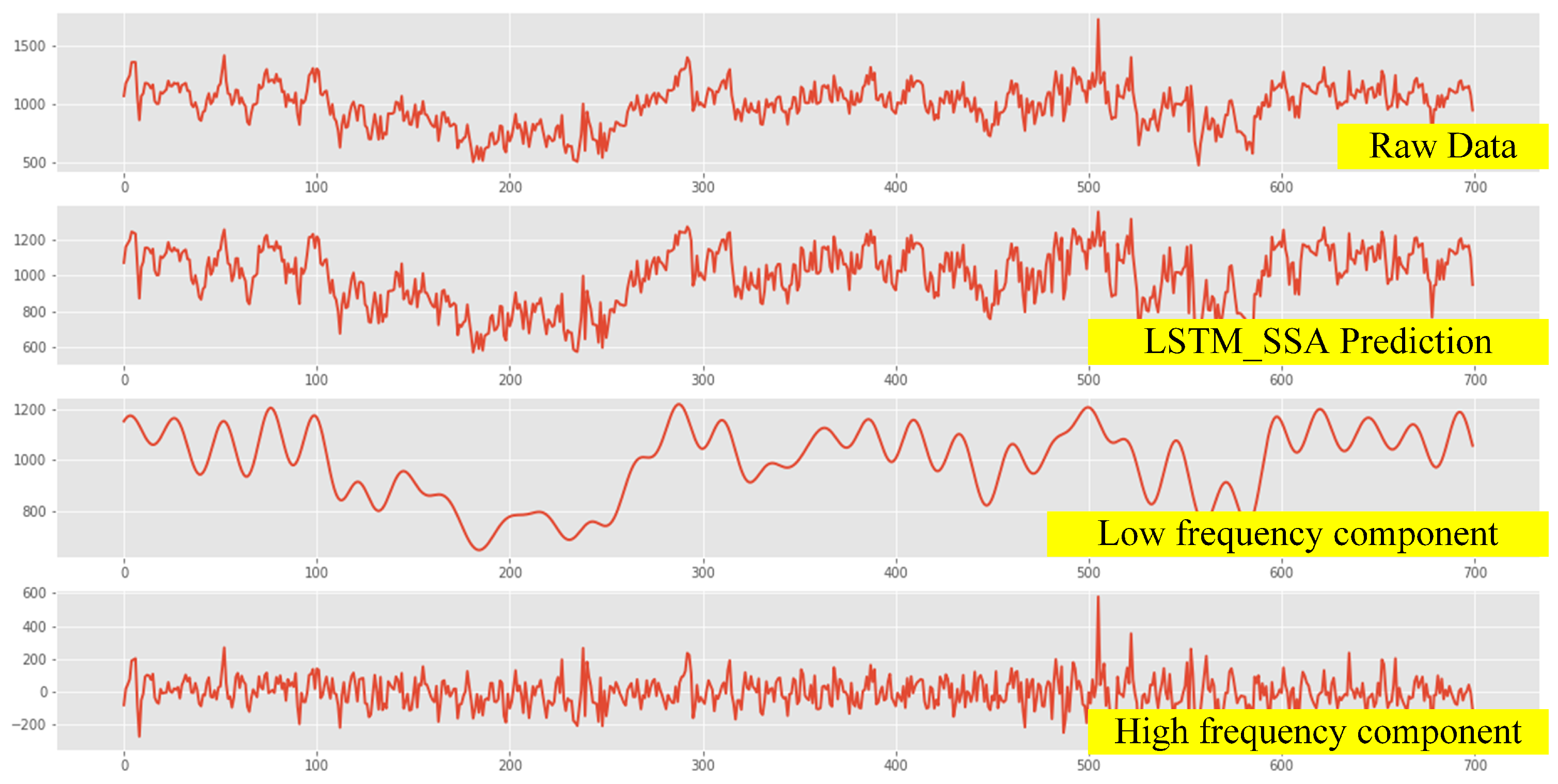
| Parameters | Value |
|---|---|
| DC source voltage | 900 V |
| Capacitor voltage | 300 V |
| Output frequency f | 50 Hz |
| Carrier frequency | 20 kHz |
| Power factor | 1 |
| RMSE (kW) | MAE (kW) | MAPE | |
|---|---|---|---|
| ANN | 2646.913 | 2291.346 | 0.304 |
| LSTM | 1342.607 | 975.746 | 0.167 |
| SSA-LSTM | 1109.224 | 664.887 | 0.0955 |
Publisher’s Note: MDPI stays neutral with regard to jurisdictional claims in published maps and institutional affiliations. |
© 2021 by the authors. Licensee MDPI, Basel, Switzerland. This article is an open access article distributed under the terms and conditions of the Creative Commons Attribution (CC BY) license (https://creativecommons.org/licenses/by/4.0/).
Share and Cite
Huo, W.; Zhu, J.; Zhou, J. Power Distribution Control Framework for Renewable Energy Architecture with Battery-Supercapacitor Based Hybrid Energy Storage Systems. Energies 2021, 14, 8312. https://doi.org/10.3390/en14248312
Huo W, Zhu J, Zhou J. Power Distribution Control Framework for Renewable Energy Architecture with Battery-Supercapacitor Based Hybrid Energy Storage Systems. Energies. 2021; 14(24):8312. https://doi.org/10.3390/en14248312
Chicago/Turabian StyleHuo, Weiyue, Jihong Zhu, and Jing Zhou. 2021. "Power Distribution Control Framework for Renewable Energy Architecture with Battery-Supercapacitor Based Hybrid Energy Storage Systems" Energies 14, no. 24: 8312. https://doi.org/10.3390/en14248312
APA StyleHuo, W., Zhu, J., & Zhou, J. (2021). Power Distribution Control Framework for Renewable Energy Architecture with Battery-Supercapacitor Based Hybrid Energy Storage Systems. Energies, 14(24), 8312. https://doi.org/10.3390/en14248312







